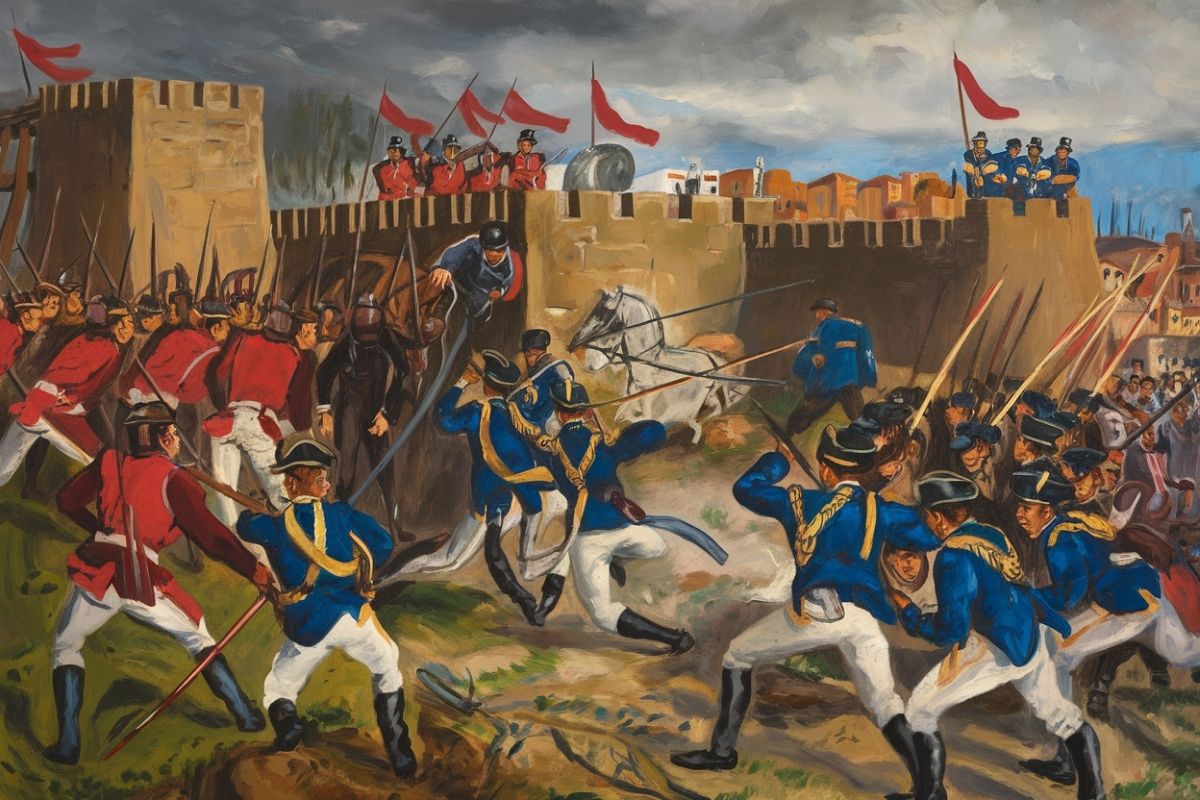
Ever wondered about the Colombia–Peru War? This conflict, often overlooked, played a crucial role in shaping South American history. The Colombia–Peru War erupted in 1932 and lasted until 1933, driven by territorial disputes over the Amazon region. Both nations sought control over the resource-rich area, leading to intense battles and significant political maneuvers. The war saw the involvement of various indigenous groups, adding complexity to the conflict. Despite its brief duration, the war had lasting impacts on the diplomatic relations between Colombia and Peru. Understanding this war offers insights into the geopolitical dynamics of the region and the resilience of its people.
Key Takeaways:
- The Colombia–Peru War, also known as the Leticia War, was a conflict over territorial disputes in the Amazon region. It began in 1932 and ended in 1933, shaping the history of both nations.
- The war highlighted the importance of diplomacy and peaceful resolution of conflicts. It had lasting impacts on Colombia and Peru, leading to increased regional cooperation and a reminder of the need for clear borders.
Background of the Colombia–Peru War
The Colombia–Peru War, also known as the Leticia War, was a conflict that took place between 1932 and 1933. It was primarily fought over territorial disputes in the Amazon region. Here are some fascinating facts about this historical event.
-
The war began on September 1, 1932, when Peruvian civilians seized the Colombian town of Leticia.
-
Leticia, a small town in the Amazon rainforest, was the focal point of the conflict due to its strategic location.
-
The dispute originated from the Salomón-Lozano Treaty of 1922, which granted Leticia to Colombia, causing discontent in Peru.
-
Peruvian President Luis Miguel Sánchez Cerro initially supported the civilian takeover of Leticia.
-
Colombia responded by mobilizing its military forces to reclaim the town.
Key Events During the War
Several significant events marked the course of the Colombia–Peru War. These events shaped the outcome and the eventual resolution of the conflict.
-
On September 17, 1932, Colombia declared a state of war against Peru.
-
The Peruvian Navy played a crucial role by blockading the Amazon River to cut off Colombian supplies.
-
Colombia launched a counteroffensive in early 1933, aiming to retake Leticia.
-
The conflict saw several skirmishes and battles in the dense Amazon jungle.
-
Both nations faced logistical challenges due to the remote and difficult terrain.
International Involvement and Mediation
The international community played a role in mediating the conflict and ensuring a peaceful resolution.
-
The League of Nations intervened to mediate between Colombia and Peru.
-
Brazil, as a neighboring country, also offered to mediate and help resolve the dispute.
-
The United States expressed concern over the conflict and urged both sides to seek a peaceful solution.
-
In May 1933, the League of Nations established a commission to oversee the ceasefire and negotiations.
-
The commission was led by Brazilian diplomat Oswaldo Aranha.
Resolution and Aftermath
The war eventually came to an end, and both countries worked towards a peaceful resolution. The aftermath of the conflict had lasting impacts on Colombia and Peru.
-
On May 24, 1933, a ceasefire agreement was signed between Colombia and Peru.
-
The Leticia Agreement, signed on May 25, 1934, officially ended the conflict.
-
The agreement stipulated that Leticia would remain under Colombian control.
-
Both countries agreed to demilitarize the disputed region.
-
The League of Nations played a crucial role in ensuring the implementation of the agreement.
Impact on Colombia and Peru
The Colombia–Peru War had significant political, social, and economic impacts on both nations. Here are some of the lasting effects.
-
The war strained diplomatic relations between Colombia and Peru for several years.
-
Both countries increased their military presence in the Amazon region to prevent future conflicts.
-
The conflict highlighted the importance of clear and mutually agreed-upon borders.
-
Colombia and Peru eventually normalized relations and worked towards regional cooperation.
-
The war had a lasting impact on the indigenous communities living in the Amazon region.
Legacy of the Colombia–Peru War
The legacy of the Colombia–Peru War continues to be remembered in both countries. It serves as a reminder of the importance of diplomacy and peaceful resolution of conflicts.
-
The war is commemorated in Colombia and Peru through various memorials and historical sites.
-
Historians continue to study the conflict to understand its causes and consequences.
-
The Leticia War is often cited as an example of successful international mediation.
-
The conflict underscored the need for effective communication and negotiation between nations.
-
The Colombia–Peru War remains a significant chapter in the history of South America.
Final Glimpse at the Colombia–Peru War
The Colombia–Peru War was a brief but intense conflict that left a lasting impact on both nations. It highlighted the importance of diplomacy and international mediation in resolving disputes. The war also showcased the resilience and determination of the people involved. Understanding these historical events helps us appreciate the complexities of international relations and the sacrifices made for peace.
By learning about the Colombia–Peru War, we gain insights into the struggles and triumphs of those who lived through it. This knowledge not only enriches our understanding of history but also reminds us of the importance of working towards peaceful resolutions in our own time. The lessons from this conflict continue to resonate, emphasizing the need for cooperation and understanding among nations.
Frequently Asked Questions
Was this page helpful?
Our commitment to delivering trustworthy and engaging content is at the heart of what we do. Each fact on our site is contributed by real users like you, bringing a wealth of diverse insights and information. To ensure the highest standards of accuracy and reliability, our dedicated editors meticulously review each submission. This process guarantees that the facts we share are not only fascinating but also credible. Trust in our commitment to quality and authenticity as you explore and learn with us.
